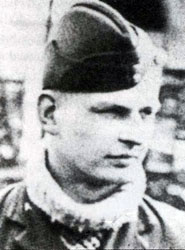Spitfire K9988 at Leconfield airfield.
On 21st February 1940 this 616 Squadron aircraft was one of three from the squadron being scrambled for take off from Leconfield airfield at 14.15hrs when it collided with 234 Squadron Magister N3859.
battle was taking off which bell noticed on port side and that their course would converge
throttled back and applied right rudder
battle became airborne
bell reapplied power releasing he would pass below and behind the airborne battle.
felt what appeared to be a large pool of water and spitfire went onto nose
Battle L5031 piloted by Sgt Raymond Walter Emlyn 561763 of 245 Squadron local flying
and was struck whilst the pilot of this Spitfire was trying to avoiding hitting a Battle. The collision caused damage to both aircraft, deemed enough to write both off at a later date.
The collision is mentioned in 60 MU's ORB, and they recovered K9988 on 24th February 1940. The pilot of the other aircraft was killed and is named on the specific webpage to that aircraft.
Pilot - F/O John Swift Bell RAF(Aux) (90051).
John Bell joined 503 (Aux.) Squadron in 1935 and received a commission to P/O on 22nd April 1935 in the Reserve. 503 Squadron was disbanded in November 1938 and
absorbed into 616 Squadron which was a bomber squadron at the time but later transferred to Fighter Command in December 1938. He was called up when War was declared. In June 1940 he was shot down over Dunkirk but baled out and was picked up by the Royal Navy. He was credited with damaging a Heinkel HeIII over Yorkshire on 1st July 1940. He was Mentioned in Despatches on an unknown date. F/O John Bell was sadly killed on 30th August 1940 flying Spitfire X4248 during the Battle of Britain. His aircraft crashed on approach to land at West Malling after being in combat with an Me109. He was twenty three years old and is buried in Eastgate Cemetery, Lincoln.

Spitfire K9988 was built to contract 527113/36 by Vickers Armstrong's (Supermarine) Ltd at Woolston and first test flown on 23rd May 1939. It was delivered to 66 Squadron at Duxford during the same day. It then transferred to 616 Squadron based at Leconfield on 14th November 1939 during the squadrons conversion from Battles to Spitfires. Following the incident detailed above Cat W/FA damage was recorded and after assessment by 60 MU it was deemed beyond repair and was struck off charge on 16th March 1940. It had flown a total of 84.30 hours.